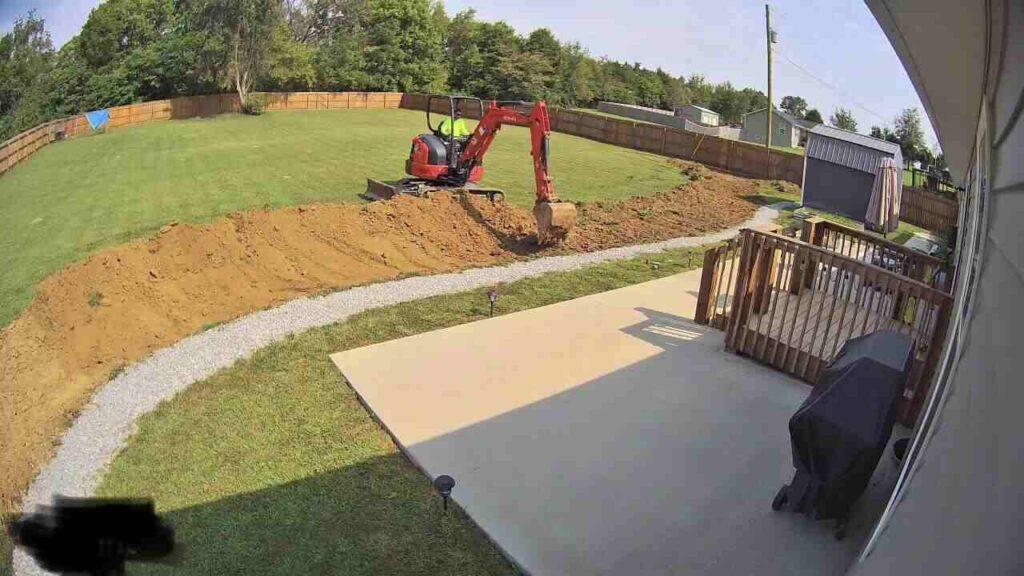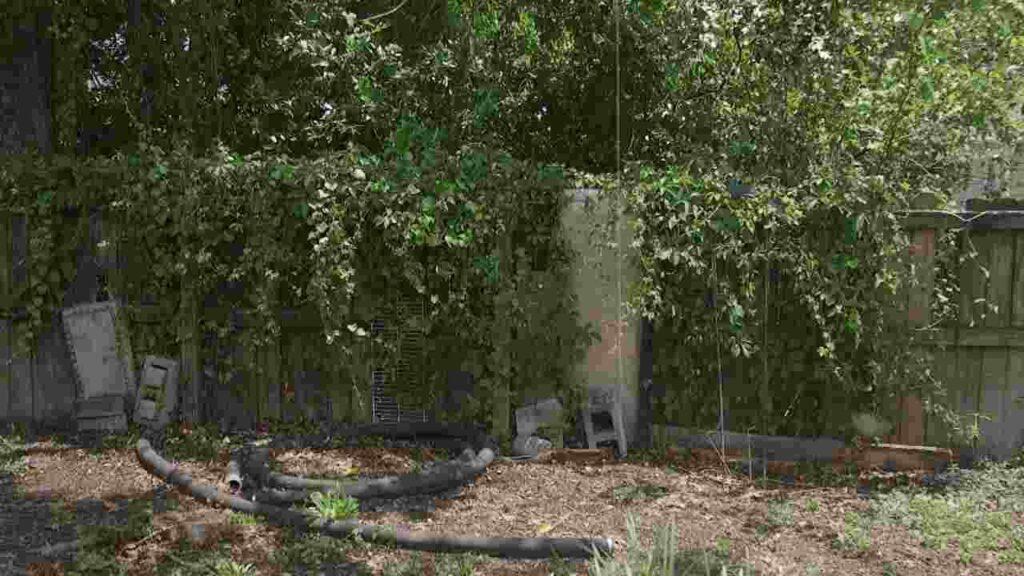A drainage easement is a legal right granted to someone—often a municipality or utility company—to use a portion of your property for managing water flow or drainage. This means they can access and maintain drainage systems like pipes or ditches that help control water runoff and prevent flooding. While this easement helps protect your property from water-related issues, it can also impact how you use and modify that area of your land. For example, you might be restricted from building structures or planting certain types of vegetation in the easement zone. In this guide, we will explore how drainage easements work, their implications for property owners, and what you need to know to manage and work around them effectively along with the assistance of Liberty Heritage Nursery Farm.

Understanding the terms of any drainage easement on your property is crucial, as it affects both your property’s use and its overall value. Familiarizing yourself with the easement’s boundaries, maintenance responsibilities, and any restrictions can help you avoid conflicts and ensure you comply with legal requirements. Additionally, knowing these details can aid in future property transactions and modifications. For professional guidance, drainage solution services can assist in navigating the implications of an easement, ensuring that any drainage systems are properly managed and maintained while respecting the easement’s conditions.
What is a Drainage Easement?
A drainage easement is a legal right allowing a third party, such as a municipality or utility company, to access and use a portion of your property for managing water flow and drainage. This typically involves maintaining and operating drainage systems like pipes, ditches, or culverts that help control surface water runoff and prevent flooding. The easement is established to ensure that water is directed away from your property and neighboring areas, reducing the risk of damage. While it provides essential benefits in managing water, it also means that the easement holder has certain rights over that part of your land. Understanding this arrangement is crucial for effectively managing your property and avoiding potential disputes.
How Drainage Easements Protect Your Property
Drainage easements play a vital role in protecting your property by ensuring that water runoff is managed effectively. By allowing access for maintenance and operation of drainage systems, these easements help prevent issues like flooding, soil erosion, and water damage to your home’s foundation. Properly managed drainage systems can redirect excess water away from your property, safeguarding both your landscaping and structural integrity. Additionally, the maintenance provided through the easement can reduce the risk of costly repairs due to water damage. Understanding how these easements work ensures that you are protected from potential drainage issues that could otherwise impact your property’s safety and value.
Common Types of Drainage Easements
There are several common types of drainage easements, each serving a specific purpose. Surface drainage easements allow water to flow over the land, typically managed through ditches or channels. Subsurface drainage easements involve underground pipes or culverts that carry water away from your property. Another type is stormwater management easements, which are used to control and direct stormwater runoff, often incorporating retention or detention ponds. Each type addresses different drainage needs and is designed based on the property’s layout and water flow patterns. Knowing the type of easement on your property helps in understanding its purpose and how it affects your land.
Understanding Easement Boundaries and Restrictions
Understanding the boundaries and restrictions of a drainage easement is crucial for proper property management. The easement typically specifies the area of your property that is accessible for drainage purposes and outlines any limitations on how you can use or modify this space. Boundaries are usually marked in property records or maps provided when the easement was established. Restrictions may include prohibitions on building structures, planting vegetation, or altering the terrain within the easement area. Familiarizing yourself with these details helps ensure you comply with the easement terms and avoid conflicts with the easement holder, while also protecting your property’s functionality and value.
Impact of Drainage Easements on Property Use
Drainage easements can significantly impact how you use your property. The easement area is designated for managing water flow, which can restrict your ability to build structures, plant trees, or make other modifications. These restrictions help maintain the effectiveness of the drainage system but can limit your use of the affected land. For example, you might not be able to place a shed or garden in the easement zone. Understanding these impacts allows you to plan and use your property effectively while ensuring that the drainage system functions properly. Proper management of the easement area helps balance property use with necessary water management.
How to Determine if You Have a Drainage Easement
To determine if you have a drainage easement on your property, start by reviewing your property deed or title report, which should detail any existing easements. You can also check with your local municipality or county office, as they maintain records of easements and property boundaries. Property surveys or maps might also indicate easement areas. Additionally, if you experience drainage issues or receive notices from utility companies or local authorities, it may signal the presence of an easement. Confirming this information helps you understand your rights and responsibilities regarding property management and maintenance.
Maintenance Responsibilities for Drainage Easements
Maintenance responsibilities for drainage easements are typically outlined in the easement agreement. Generally, the easement holder, such as a municipality or utility company, is responsible for maintaining the drainage system to ensure it functions correctly. This includes regular inspections, cleaning, and repairs of drainage pipes, ditches, or other structures. As a property owner, you may have limited responsibilities, such as keeping the easement area clear of debris and avoiding activities that could obstruct water flow. Understanding these responsibilities ensures that you comply with the terms of the easement and help maintain the effectiveness of the drainage system.

Restrictions on Property Modifications in Easement Areas
Restrictions on property modifications within easement areas are designed to ensure the effective functioning of drainage systems. These restrictions typically include prohibitions on building structures, planting trees or shrubs, and altering the land’s grade. Such activities can interfere with water flow, block access for maintenance, or damage the drainage system. The easement agreement or local regulations will specify what is and isn’t allowed within the easement zone. Adhering to these restrictions helps prevent drainage issues and ensures that the easement serves its intended purpose without complications. It’s important to review these guidelines before making any changes to your property.
Navigating Legal Requirements for Drainage Easements
Navigating the legal requirements for drainage easements involves understanding and complying with local laws and regulations. This includes reviewing the terms outlined in the easement agreement, which detail the rights and responsibilities of both the property owner and the easement holder. You may need to consult with legal or property professionals to fully grasp these requirements and ensure compliance. Additionally, staying informed about any changes in local regulations or updates to the easement terms is essential. Proper navigation of these legal aspects helps you manage your property effectively while avoiding potential disputes or legal issues related to the easement.
The Role of Drainage Solution Services in Managing Easements
Drainage solution services play a key role in managing easements by ensuring that the drainage systems within the easement area are properly maintained and functional. These services can provide expertise in assessing the condition of drainage pipes, ditches, and other structures, as well as performing necessary repairs and upgrades. They help ensure that the drainage system meets legal requirements and functions effectively, preventing potential water-related issues. Additionally, these services can assist in navigating the terms of the easement, ensuring that maintenance activities comply with any restrictions or guidelines. Engaging a professional drainage service helps maintain both the functionality of the drainage system and adherence to easement terms.
How Drainage Easements Affect Property Value and Transactions
Drainage easements can affect property value and transactions by influencing how the land can be used and modified. Easements may restrict certain developments or uses, which can impact the property’s appeal to potential buyers. Properties with easements may be valued lower due to these limitations or the potential for maintenance issues. During transactions, easements must be disclosed to prospective buyers, who will need to understand how the easement affects their intended use of the property. Properly managing and maintaining the drainage system within the easement can mitigate negative impacts and help preserve the property’s value, ensuring a smoother transaction process.
Conclusion
In conclusion, understanding and managing a drainage easement is essential for maintaining your property’s functionality and value. Drainage easements are designed to ensure effective water management and prevent flooding or damage, but they come with specific boundaries and restrictions that can impact how you use your land. By familiarizing yourself with the easement’s terms, understanding your maintenance responsibilities, and knowing how to navigate legal requirements, you can effectively manage the easement and avoid potential issues. Engaging professional drainage solution services can also help in maintaining the system and complying with easement terms. Proper management not only protects your property but also supports its value and usability, ensuring that you make the most of your investment.
FAQs
What is a drainage easement?
A drainage easement is a legal right allowing a third party to access a portion of your property for managing and maintaining water flow. It helps prevent flooding and water damage.
How does a drainage easement affect my property use?
It may restrict your ability to build structures or plant vegetation in the easement area to ensure effective drainage and maintenance of the system.
Who is responsible for maintaining a drainage easement?
Typically, the easement holder, such as a municipality or utility company, is responsible for maintaining the drainage system, though property owners may need to keep the area clear of obstructions.
How can I find out if I have a drainage easement on my property?
Check your property deed, title report, or local municipality records for information on existing easements, or consult a property survey.
Can a drainage easement affect my property’s value?
Yes, easements can impact property value by restricting land use and potential modifications, but proper management can help mitigate negative effects and preserve value.
